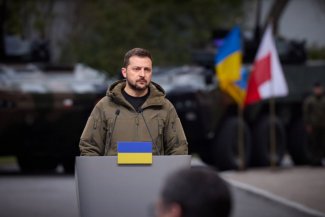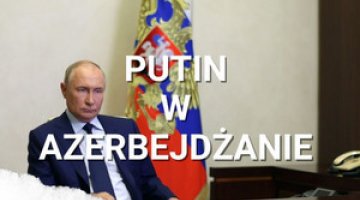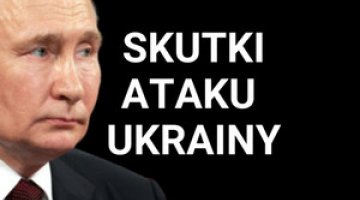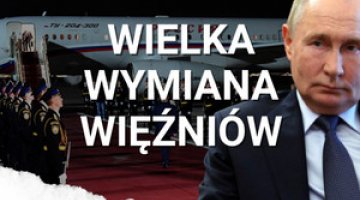The Polish-Ukrainian military partnership. Day 407 of the war

Russian forces have probably captured the more important facilities in the centre of Bakhmut (including administration buildings and the train station) and linked up the subdivisions attacking from the northern and southern parts of the city. However, the Ukrainians continue to hold positions in the centre, and the command and government in Kyiv insist that they will continue to defend Bakhmut. On 5 April, President Volodymyr Zelensky said the order to withdraw could be given if continuing to defend it risked great loss of life. The following day, the importance of defending the town was symbolically emphasised by National Security and Defence Council (NSC) Secretary Oleksiy Danilov: “We are holding onto Bakhmut because it is our land. If we start giving everything back, we will end up at the borders of western Ukraine”.
Armed clashes in the vicinity of the town have been much less intense, and the attackers are still targeting the main points of Ukrainian resistance southwest of Bakhmut, northeast of the junction of Chasiv Yar, and in the area of the M03 road to Sloviansk. On 6 April, after a break of several days, the Russians renewed their attacks on the western side of the Donets-Donbas canal toward Kostiantynivka. In total, the defenders have repelled 25–35 enemy attacks per day in and around Bakhmut.
The situation in the Avdiivka and Marinka areas, where the defenders appear to have repelled all the enemy attacks in recent days, has not changed. However, the intensity of fighting has increased northwest of Donetsk (near the village of Pervomaiske) and in the forest southwest of Kreminna, an area bounded by the Donets and Zherebets rivers. Both sides have periodically gained the advantage there, but have returned to the positions they had previously lost.
On 4 April, the Russians attacked Odesa and its environs using Shahed-136/131 kamikaze drones, striking industrial facilities. The defenders claimed to have shot down 14 of the 17 drones attacking the city. Russian forces renewed missile attacks on the defenders’ hinterland in the part of the Donetsk oblast under their control, and their targets once again included Slavyansk. The Russian aviation and artillery has continued shelling and bombardment along the contact lines and in border areas. Kherson and surrounding towns remain the main targets outside the combat areas. After a break of several days, the Russians resumed shelling Nikopol. Meanwhile Ukrainian artillery has continued shelling Melitopol using HIMARS systems. The Ukrainian army’s Air Force Command notes that the Russian air force is increasing its use of large-weight glide bombs (500 kg or more) equipped with guidance systems; the Ukrainians noted that their forces do not have the means to combat them.
During President Zelensky’s visit to Warsaw on 5 April, documents regarding Ukraine’s purchase from Poland of armaments and facilities for the production of weapons were signed. The Ukrainian army ordered 150 Rosomak wheeled APCs and three Rak fire modules (a total of 24 120-mm self-propelled mortars with protection vehicles), as well as 100 Piorun man-portable air-defence systems (MANPADS). It was also confirmed that Ukraine will soon receive a total of 14 Polish MiG-29 fighter jets (four were delivered in March, four are ready for transfer, and six are being prepared). According to the Polish president Andrzej Duda, Ukraine may eventually receive the entire fleet of Polish MiG-29 fighters (after the aircraft already promised to Ukraine have been sent there, a further 14 aircraft of this type will most likely remain in the Polish Air Force). The Polish Armaments Group (Polska Grupa Zbrojeniowa, PGZ) and Artem, which is part of the Ukroboronprom concern, have signed an agreement to cooperate in the production of 125-mm tank ammunition (for post-Soviet tanks), to be based on new production lines at Polish plants.
On 4 April, the US Department of Defence announced details of another military support package worth a total of $2.6 billion, which will mainly consist of Western and post-Soviet munitions. The Western armaments listed include missiles for Patriot, NASAMS and HIMARS systems, airborne precision-guided munitions, 155-mm & 105-mm artillery shells and 120-mm & 105-mm tank shells, 120-mm mortar grenades, ammunition for 25-mm cannons, anti-tank guided missiles (Javelins and TOWs), 400 grenade launchers & 200,000 rounds of ammunition (unspecified), and 3600 small arms & 23 million rounds of small arms ammunition. The post-Soviet armaments include 120-mm, 81-mm and 60-mm mortars with ammunition, 130-mm and 122mm artillery shells, 122-mm rocket shells for Grad systems, and ammunition for 30-mm and 23mm anti-aircraft guns. Ukraine will also receive nine 30-mm drone-countermeasure cannons, ten mobile missile systems with C-UAS laser sights (short-range, mounted on all-terrain vehicles), three airspace surveillance radar units, eight heavy tractor-trailers and 105 fuel trailers, and assault bridges. Most of this equipment is being financed under the Ukraine Security Assistance Initiative ($2.1 billion), which means that the announcement of the package forms the basis for the start of negotiations with the manufacturers to purchase the equipment; that means it will not be arriving in Ukraine anytime soon.
On 3 April, the Australian arms manufacturer Electro Optic Systems (EOS) and the Ukrainian company SpecTechnoEksport agreed on Ukraine’s purchase of 100 remotely operated weapon modules, to be delivered in 2023–4. The deal is expected to cost $80 million. Meanwhile on 5 April, the US Department of Defence signed an agreement with General Dynamics Land Systems to prepare M1A1 Abrams tanks for Ukraine, at a cost of $27.1 million. The number of tanks was not disclosed (earlier it was reported that the US would send 31 Abrams). Work at the manufacturer is expected to be completed on 29 September this year.
On 5 April, the management of the Kyiv-based Ukrainska Bronetekhnika company announced that it had resumed production in Ukraine of 60-mm mortar cartridges with a simplified design compared to classic mortar grenades of this calibre. The Ukrainian army has apparently already received 100,000 of them.
On 5 April, the Security Service of Ukraine (SSU) and the State Bureau of Investigation (SBI) published recordings of conversations between SSU Colonel Oleh Kulinich, who was head of the SSU’s Crimea Office (based in Kherson) from October 2020 to July 2022, and Volodymyr Sivkovych, who was deputy prime minister in charge of security affairs and the deputy secretary of Ukraine’s National Security and Defence Council (NSDC) during Viktor Yanukovych’s presidency and defected to Russia in 2014. The talks took place before the war began, and mainly concerned the issue of personnel changes in the SSU leadership. According to the SSU and the SBI, Sivkovych was one of the people who recruited agents in the government & special services in Ukraine, and was controlled by an FSB cell responsible for destabilising the Ukrainian state and preparing for the Russian attacks. Kulinich was arrested in July 2022.
On 6 April, a court hearing was held in Niš, Serbia, in the case of Andriy Naumov, a former brigadier general and head of the SSU’s Main Directorate of Internal Security, who has been accused of money laundering; no verdict has yet been reached in the case. He fled Ukraine on the night of 23–24 last year February, after which he was detained in Serbia carrying the equivalent of over €700,000 in cash. According to unofficial reports, the possibility of Naumov’s extradition is under consideration.
Also on 6 April the Russian Volunteer Corps, which is a subdivision for sabotage supervised by Ukrainian military intelligence (HUR), reported that its soldiers had conducted a raid into Russian territory. The proof of this came in a video showing Russian volunteers in the border village of Sluchovsk in Bryansk oblast. The fact of this incursion was also confirmed by the governor of the oblast, Aleksandr Bogomaz, who estimated that the group numbered 20 people. This was the second such operation in the region claimed by the Russian Volunteer Corps (the previous one took place on 2 March).
In an interview with the Financial Times Andriy Sybiha, deputy head of the Office of the President of Ukraine, stated that Ukraine would be ready to negotiate the future of Crimea after “achieving strategic goals on the battlefield” and reaching the administrative borders of the peninsula.
The NSDC Secretary Danilov estimated that the number of long-range missiles in Russia has decreased to a critical level, and that the capabilities of the arms industry to produce them are limited. He noted that despite this, Ukraine was still under threat from Russian missile attacks.
Commentary
- The decision to purchase arms which were taken during President Zelensky’s visit to Warsaw mean that Poland’s arms industry is emerging as a major supplier of modern armaments to Ukraine’s land forces. If we consider the donations made and the contracts Kyiv has concluded to date, most armaments for the land forces Ukraine can expect to receive are or will be sourced from Poland: 155-mm Krab self-propelled howitzers (a total of 72 of these have been delivered and ordered; the 30 British AS90s and 14 German PzH 2000s can be considered as equally modern, although the Ukrainian army is unlikely to receive any more of them), Rosomak wheeled armoured carriers (150 units; the Americans also intend to hand over 90 of the older type of Stryker carriers), and Rak self-propelled mortars (24 units; these will be the first self-propelled mortars delivered to Ukraine). It is probable that the above-mentioned Polish armaments, as well as Piorun MANPADS and GROT carbines, will be selected by the Ukrainian army as their basic day-to-day equipment; therefore purchases of these units will continue, and that will systematically increase the potential interoperability of the Polish and Ukrainian armies.
- It is still unclear which infantry fighting vehicle (IFV) Ukraine will choose to use. They should receive 50 modern CV90s from Sweden this year, and in the near future 109 American Bradleys, which can be considered as relatively modern (the Marders Germany has donated are already obsolete). The Polish Armed Forces remain the main competitor of the Ukrainian army for Polish Borsuk IFVs, the newest currently on the market. If both countries order Borsuks, that would require the Polish arms industry to significantly increase its production capacity. If the Ukrainians order CV90s, however, that would force the Swedish industry to increase its production capacity. In addition to the US, only South Korea currently has the spare capacity to deliver a large number of modern IFVs to Ukraine relatively quickly; however Seoul has not supplied any armaments to Kyiv (with the exception of granting Poland permission to sell Ukraine Krab cannon howitzers; these are mounted on Korean chassis produced under license).
- The published recordings of Kulinich’s conversations with Sivkovych confirm the deep infiltration of the SSU by the Russian FSB before the outbreak of the war. They further indicate that the absence on 24 February 2022, of a strong Ukrainian grouping on the border with Crimea, together with the failure to defend intact bridges and strategically important isthmuses (primarily the Perekopsky & Chongar isthmuses, and the bridges over the River Dnieper near Kherson) may have been the result of Russian agents passing on disinformation to the highest authorities in Kyiv. Kulinich, as head of the Crimean SSU office, was responsible for counterintelligence protection of the sensitive section around the line of demarcation with Crimea, and for intelligence reconnaissance on the peninsula itself.
- The Kulinich-Naumov affair may have political repercussions in the future, as Ivan Bakanov, who was the SSU’s head from 2019 to 2022 and is a friend and close associate of Zelensky, was behind their appointments. Moreover, it is the president’s signature that appears on the decree appointing Kulinich. The latter graduated from the FSB’s officer school in the early 1990s, served in the SSU until 2006, and was then associated with Yanukovych’s team. Bakanov, however, decided to reinstate him, and also entrusted him with the position of head of the SSU’s Crimean office. The issue of President Zelensky’s political responsibility for Ukraine’s unpreparedness for the war and the SSU’s infiltration by Russian special services has already been debated in Ukraine over the past year.




